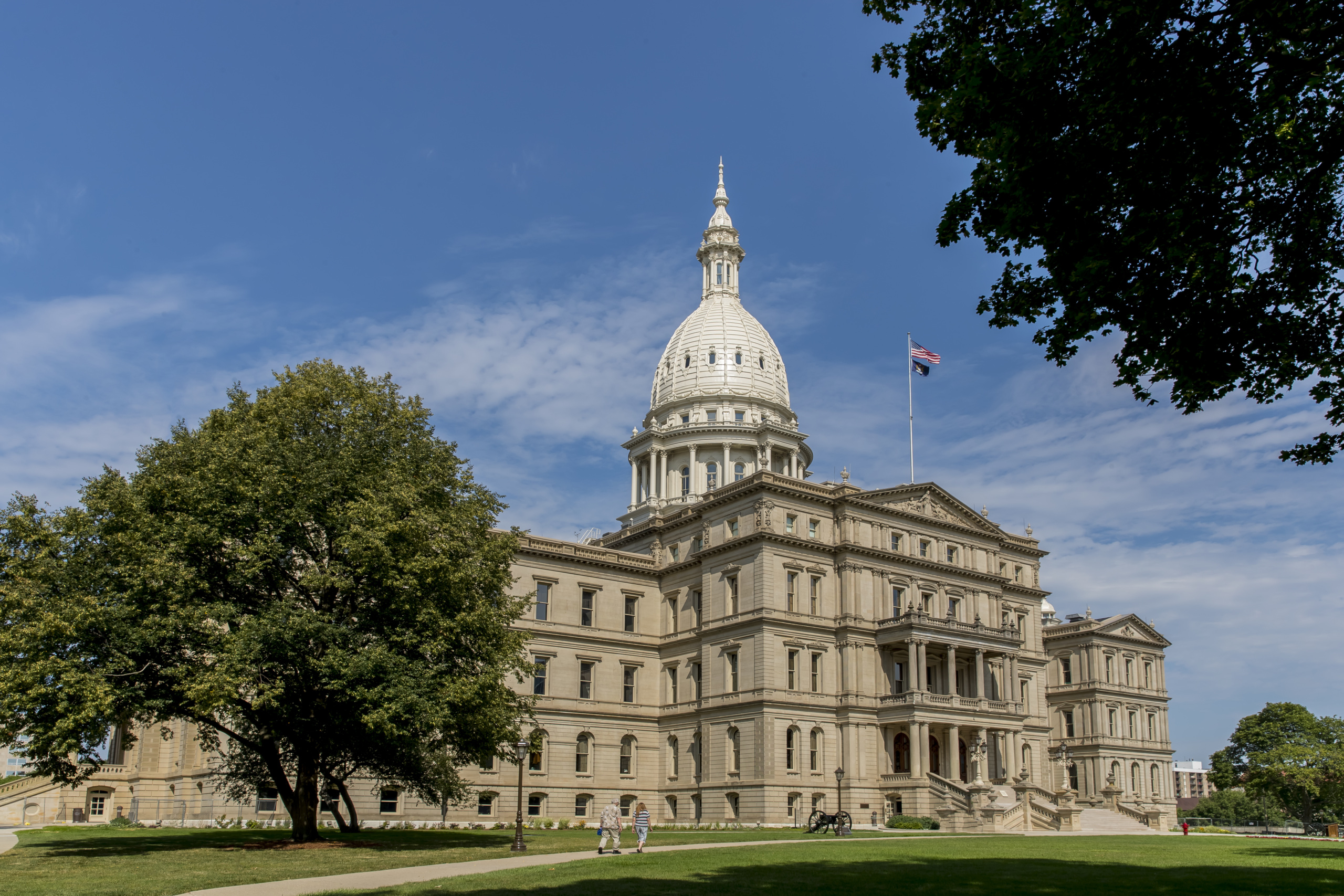
The rise of sustainable guitars: How an industry is innovating to save our forests
The magnitude of change needed to halt the destruction of the world’s forests requires equally seismic innovation in the way we manufacture our products. The guitar industry's on it.
As acoustic guitars go, my Breedlove Atlas AC200/SM isn’t a high-end instrument. As sub-$500 acoustic guitars go, it’s superb. It’s been with me almost 20 years, and I can’t imagine a scenario where I’d voluntarily part with it. Nevertheless, a few months ago I did begin to entertain the notion of seeking out a new addition to the household: one with a warmer, mellower tone than the bright, brilliant sound of the Breedlove.
Every guitar ever made has its own unique sonic character, each with its own subtle overtones and harmonics that make up its overall sound. Of the countless different elements that converge to create that sound, perhaps the most important are the materials from which the instrument is constructed.
My old Breedlove has a mahogany back, sides and neck, an Indian rosewood fretboard and bridge, and a Sitka spruce top (hence the brightness) – all of which are widely used tonewoods in guitar manufacturing. At the time I bought it, I don’t think I paid much attention to the provenance of those materials, but it’s something I’ve been acutely aware of in my current mission.
There are certain types of wood – particularly rosewood, mahogany, ebony and spruce – that have come to be seen as essential to good acoustic guitars. Pressure placed on these species, in part by the instrument manufacturing industry and its customers, plus the fact that some of the most sought-after tonewoods come from trees that can take centuries to develop their acoustic characteristics, has often meant that buying an acoustic guitar can involve a tradeoff between quality and sustainability.
But that’s increasingly no longer the case. And the specific confluence of factors that have driven that change holds a broader relevance way beyond the world of guitars.
The guitar industry’s shift toward sustainability began in earnest against the backdrop of the worldwide anti-deforestation campaigns of the 1990s. With a growing public awareness of the scale of the damage being done to the world’s forests, manufacturers began to recognize that their industry had to take steps both to mitigate its contribution to that damage and to respond to the changing worldview of an increasingly ecologically conscious customer base. This is an industry, after all, that uses a lot of wood – nowhere near as much as, say, furniture manufacturing, but still, a lot of wood – and growing mindfulness of the implications of this led the major guitar companies to begin seriously rethinking how they sourced that wood.
Pretty much every leading manufacturer has since gone to ever increasing lengths to ensure their materials are sourced from sustainably managed forests with processes in place to ensure their trees are harvested in ecologically responsible ways. In the late 1990s, Gibson became the first major guitar company to start using wood certified by the Forest Stewardship Council (FSC) as sustainably harvested, and many guitars now carry the official FSC logo, or that of the Program for the Endorsement of Forestry Certification (PEFC), affirming that anyone involved in producing them adheres to sustainable forestry practices.
Often the wood that ends up in these instruments comes from trees planted specifically for that purpose, from dead or dying trees selectively harvested from functional forests, or (in rarer cases) from reclaimed sources. Manufacturers often work closely with landowners to ensure that their tonewoods are farmed responsibly, and some have been heavily involved in advocacy for changes in logging practices to protect threatened forest habitats. Sustainability has become a selling point, and manufacturers now make a big fuss of instruments made from fully sustainable materials.
While it’s true that not all “sustainable” guitars are 100% squeaky clean (sourcing wood from monoculture plantations brings its own set of ecological problems, for example), and that the companies making lines of eco-friendly instruments are sometimes still producing others containing materials of more questionable origins, it is nonetheless also true that, on the whole, all the leading brands are now very responsible when it comes to sourcing tonewoods, and the overall trajectory continues to be largely in the right direction.
Alongside the increasing emphasis on sustainable forestry practices, another notable feature of this trajectory has been a shift away from standard guitar tonewoods like rosewood, maple and mahogany altogether, and toward “alternative tonewoods.” It’s increasingly common to see guitars containing koa, basswood (a good alternative to alder or ash), khaya and sapele (both excellent alternatives for mahogany) and a range of other species, as well as composite materials like Flaxwood (shreds of recycled wood fibers mixed with an acoustically resonant thermoplastic bonding agent, developed by the Finnish company of the same name) and Richlite (made from wood fiber and recycled paper). These materials all have their own unique tonal qualities that can rival, or even surpass, those of traditional tonewoods.
These innovations have in some cases been in the works for years, partly as a result of growing consumer recognition of the ecological impact of an industry that relies so heavily on timber (i.e., the fact that people like me are now asking questions about where their instruments come from), and partly out of a genuine sense of environmental responsibility on the part of manufacturers (musicians, as a group, aren’t generally known for their desire to destroy the planet).
But the third major driver of these developments, and perhaps the one that’s been most influential in bringing these alternative materials into the mainstream – and more importantly, keeping them there – is the legal context in which the music industry operates.
The addition of several traditionally used tonewoods to the 1973 Convention on International Trade of Endangered Species of Wild Fauna and Flora (CITES) in the 1990s and early 2000s, for example, made it a lot more of a headache for manufacturers to import these woods, and to some extent less appealing for people to own guitars containing them – both because of the increased retail price, and because traveling across borders with such instruments became a bureaucratic nightmare for their owners.
A particularly contentious case in point came in January 2017 with the addition of rosewood to the CITES law. Brazilian rosewood had been protected against import and export since the early 1990s, but when in 2017 the restrictions were expanded to include all other types of rosewood, as well as certain kinds of bubinga (another widely used guitar tonewood), suddenly both the raw materials and any finished instruments containing them had to go through a complicated and costly process of acquiring the correct documentation before being allowed to cross international borders.
Rosewood has long been one of the most widely used materials in guitar manufacturing (and many other musical instruments) – used for fretboards, bridges, backs and sides, and in some cases, entire guitars. With the imposition of restrictions, it suddenly became extremely difficult to order a guitar containing rosewood.
Another consequence, however, was that manufacturers who had previously used rosewood in their instruments started leaning heavily into experimentation with alternative materials. Martin, for example, turned to composite materials like Richlite as an alternative for rosewood bridges and fretboards, while elsewhere, D’Angelico, ESP-Takamine and others started looking to other, more sustainable wood species, including ovangkol, cocobolo, Macassar ebony, ziricote and more.
Opinion among guitarists is divided as to whether the CITES restrictions are a good thing. To be clear: they are. The magnitude of change needed to end the ongoing obliteration of the world’s forests cannot happen without equally seismic innovation in the way we manufacture our products. The case of guitar manufacturers is an example of how a convergence of legislation and shifts in the public consciousness can fast-track and normalize such innovation – in this case, accelerating the mainstreaming of alternatives that had been in development for some time.
But perhaps even more interesting is the fact that restrictions on a number of the tree species protected by the CITES treaty, including the rosewood species added in 2017, have now been amended to include exemptions for musical instruments – but while this has freed manufacturers to use rosewood again (and most are), the alternative materials that went mainstream thanks to CITES are also now an accepted and respected feature of the guitar manufacturing landscape and likely to remain so, having proven themselves every bit as good as, and in some cases better than, traditional tonewoods.
In other words, when manufacturers find themselves having to shift their focus (and R&D dollars) toward serious exploration of new avenues of innovation, the discoveries they yield can sometimes turn out not just to be viable alternatives to what has gone before, but an improvement on it.
There is a tendency among people whose view of the world is framed primarily through the prism of public policy to imagine that change has to come from the top down – driven by bans and penalties, delivered for example through the legal and tax systems. Those things have their place. But the case of guitar manufacturing shows that for lasting change to happen, they need to be rooted in a much more complex convergence of different factors working together. The CITES restrictions accelerated a shift that was already underway, and it was only because the innovations they helped normalize were the product of a much longer process, driven by a shift in market forces in turn driven by a growing public awareness of the impact of individual choices, that the alternatives propelled into the mainstream by CITES were able to take root even after the restrictions were lifted, and now look like they’re here to stay.
This innovation is likely to gather pace over the coming years, as more and more tree species used in guitar manufacturing look set to get some level of protection under the CITES treaty – including some of the alternative tonewoods mentioned above (cocobolo, Macassar ebony, khaya and sapele are now listed by the International Union for Conservation of Nature as “vulnerable”). The result will be threefold: vulnerable forests get protected, the guitar industry evolves, and musicians get a whole load of great new options to choose from.
Which means my search for a new guitar will get even more complicated than it already is.
Topics
Authors
James Horrox
Policy Analyst, Frontier Group
James Horrox is a policy analyst at Frontier Group, based in Los Angeles. He holds a BA and PhD in politics and has taught at Manchester University, the University of Salford and the Open University in his native UK. He has worked as a freelance academic editor for more than a decade, and before joining Frontier Group in 2019 he spent two years as a prospect researcher in the Public Interest Network's LA office. His writing has been published in various media outlets, books, journals and reference works.
Find Out More

What can we do to keep the boreal forest from being flushed away?

Environment Michigan’s Program Agenda for 2024

Five of the biggest wins for wildlife and wild places in 2023



